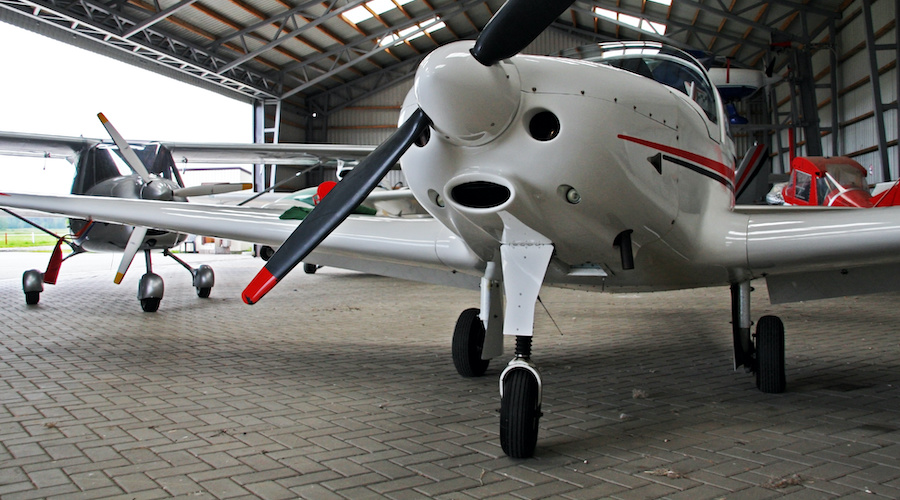-
What is Aeronautical Decision-Making (ADM)?
-
The History of Aeronautical Decision-Making
- Components of Aeronautical Decision-Making
- Perceive (PAVE):
- Process (CARE):
- Perform (TEAM):
-
Hazardous Attitudes Towards Aeronautical Decision-Making
-
Common Aeronautical Decision-Making Errors
- Confirmation Bias:
- Filtering:
- Patterns and Expectations:
- Airplane News Update
- Filling in the Gaps:
- Framing:
-
Conclusion
Since the beginning of time, humans have made mistakes. We eventually learned how to fly, but not how to avoid making mistakes. So how can we minimize the mistakes we make as pilots? And what are some of the warning signs that may lead to an error?
What is Aeronautical Decision-Making (ADM)?
To safely pilot an aircraft, you require three primary skills:
- Aircraft Control:
- The ability to fly the actual aircraft.
- Aviation Knowledge:
- Knowledge of systems, procedures, and regulations, among other aspects.
- Aeronautical Decision-Making:
- The ability to make correct decisions in a given circumstance.
It is important to note that these three aspects are interdependent. For example, outstanding ADM and aircraft knowledge will be of little use during an engine failure scenario if the pilot cannot control the aircraft. Conversely, excellent aircraft control will not benefit the pilot if they have no knowledge of the correct engine failure procedure. Furthermore, excellent aircraft control and knowledge will provide little help when the other engine fails after the pilot makes a poor decision to divert to an airport, not within range.
These are extreme examples, but they illustrate an important point: The often-overlooked process of ADM is detrimental to all other aspects of the flight.
The Federal Aviation Administration (FAA) defines ADM in AC 60-22 as: “A systematic approach to the mental process of evaluating a given set of circumstances and determining the best course of action”.
In other words: Using a system to make the best decision possible given your predicament.
The History of Aeronautical Decision-Making

As aviation became an increasingly large industry, it quickly became apparent that most accidents taking place were due in some part to human factors. Airlines realized that they could not simply rely on a crew’s experience to make good decisions. The search to find a solution culminated in the 1980s when operators introduced Crew Resource Management (CRM) training, and the results were remarkable.
In several independent studies, students were given specific ADM training and tested against their peers who did not receive ADM training. Strikingly, the students who received ADM training made between 10% – 50% fewer decision-making errors.
These studies prove the importance of ADM and that teaching ADM is possible.
Components of Aeronautical Decision-Making
The FAA defines a 3-P Model for implementing effective Aeronautical Decision Making:
- Perceive the given situation.
- Process the given situation to identify any potential hazards.
- Perform actions that will mitigate or eliminate the risk.
This model allows pilots to improve their Aeronautical Decision-Making skills by applying a framework to any given circumstance.
The 3-P model consists of the following:
Perceive (PAVE):
Examining these four elements will provide you with greater situational awareness, thus improving your decision-making:
- Pilot
- Aircraft
- enVironment
- External pressures
Process (CARE):
Now consider the following as applied to PAVE:
- Consequences
- Alternatives
- Reality
- External pressures
Perform (TEAM):
Once you have perceived any possible hazards (PAVE) and determined the impact on the flight (CARE), you can now begin to decide on the most appropriate course of action:
- Transfer: Should any decisions be deferred to someone else?
- Eliminate: Can the hazard be eliminated?
- Accept: Can you reasonably accept the risk?
- Mitigate: Can the risk be mitigated?
Hazardous Attitudes Towards Aeronautical Decision-Making
Five primary attitudes negatively affect good Aeronautical Decision-Making:
- Anti-authority: “Don’t tell me”.
- Commonly found in individuals who do not like being told what to do.
- Impulsivity: “Do it quickly”.
- Found in people whose natural reaction is to do something immediately, even if that action is not optimal.
- Invulnerability: “It won’t happen to me”.
- These people believe that they will never be personally involved in an accident.
- Macho: “I can do it”.
- This type of person will try to push boundaries to impress others.
- Resignation: “What’s the use?”
- This person believes that if things go badly, there is not much they can do to improve the situation, and if things go well, it is due to good luck.
It is vital that you immediately recognize if you begin to exhibit these attitudes and take action to prevent them from influencing your decision-making.
Common Aeronautical Decision-Making Errors
Now that we understand how to apply a model to our decisions and the attitudes and behaviors that are most likely to affect our decisions – Let’s look at some of the most common ADM errors.
Confirmation Bias:
After making a decision, humans tend to irrationally search for and favor information that confirms that the decision is correct. The “Reality” component of the 3-P model is beneficial towards decreasing confirmation bias.
Filtering:
The brain is very good at filtering the multitude of information presented to us at any given moment. Subconscious information filtering can be detrimental, however, as the pilot may filter important information. The “PAVE” component of the 3-P model can counteract this subconscious filtering of information.
Patterns and Expectations:
The brain can use previous experiences to identify patterns and create expectations, which can cause issues if the assumptions are incorrect. For example, a pilot who transfers to a different Electronic Flight Information System (EFIS) may assume how the new system displays information based on their previous experiences with EFIS instruments. This assumption will lead to the pilot incorrectly interpreting information.
Filling in the Gaps:
When incomplete information is presented to the brain, it will make assumptions about the missing information. As we saw in the previous example, assumptions can lead to dangerous situations. Optical illusions are an excellent example of dangerous assumptions the brain can make.
Framing:
When considering your options, be careful of how you frame a statement, as this will influence your decision. For example, if you are on an unstable final approach, and you frame the “continue” statement as “If I don’t land, my passengers will be angry”, you may be biased towards continuing the approach. You should instead frame the statement, “If I continue this unstable approach, I may not be able to land”.
Conclusion
As human beings, errors in judgment and decision-making are inevitable, particularly in the aviation industry. We can, however, strive to minimize such mistakes by applying frameworks and models to guide decision-making and identify hazardous attitudes that may influence our decision-making.
Anyone can learn ADM, and it is a vital skill that every aviator should strive to master.





